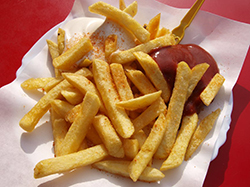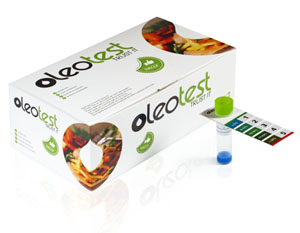The main function of oil during the frying process is to confer desirable texture and flavor to food. Since food absorbs oil in the process of frying, oil becomes an essential ingredient. The quality of fryer oil must be considered if you want to maintain a high standard for your final product.
Eight reasons why you should change your frying oil.
Changes in smell
Oil loses its freshness and starts to smell unpleasant when you reuse it too many times. This rancid smell not only fills the kitchen, restaurant and manufacturing line, but also affects your product. This can create an unpleasant –and unhealthy!– experience for your employees and customers.
Changes in color
As oil is re-used, it becomes darker through contaminants as well as chemical reactions. Appearance is important, and the golden-brown color you started with will become darker and affect the color of your finished product.
Changes in taste
A dark frying color to your oil results in a bitter or otherwise modified taste. Also, frying vegetables (potatoes, zuchinni planks) in frying oil that has been used to fry fish will affect the taste of the vegetables. A fishy-flavored vegetable appetizer is never appealing!
Digestive disorders
When frying oil comes into contact with water, peroxide bonds that oxidize the oil are formed. This gives the oil a dark color and a viscous texture. The final product is a toxic oil that when ingested produces stomach-ache and digestive disorders.
Polar compounds in fryer oil
During the frying process, dangerous changes occur in the oil compositions. Due to water content in food, atmospheric oxygen, and the high temperatures, reactions that change oil composition are produced. These changes generate polar compounds that can be harmful for human health. According to the American Journal of Clinical Nutrition, Consumption of oil containing high polar compounds is extremely harmful and can pose health hazards such as hypertension, or high blood pressure. Therefore, most of the European countries have established legislation to control the quality of frying oil specifying that the polar compound content in oil must not exceed 25%.
Read our White Paper on monitoring polar compounds in fryer oil.
High fat content
Oil loses desirable properties when overused and the frying process does not have its desired affects. Fried food becomes too oily and doesn’t have an acceptably crisp texture.
Allergen control
If there is only one deep fryer pan in the restaurant, cross contamination can occur. Battered products can leave a residue in the fryer oil that can easily be transferred to other products. This is a good enough reason to change the oil regularly.
Maintain a healthy frying environment
Frying is considered to be one of the most widespread culinary and industrial cooking techniques throughout the world. When properly used, it can create delicious and desirable foods. The main reason that the frying process can fail is the quality and freshness of the oil.
Learn more about OleoTest on our info pages.
The most accurate way to test the quality of deep frying oil is OleoTest, a rapid and economic method which determines alteration degree of the oil and that can be used by any staff in a restaurant or cafeteria. In less than two minutes you will know the percentage of polar compounds and if your frying oil is ready to use or must be changed.



